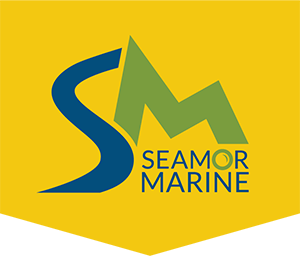ARCTIC ROV MISSION BREAKS RECORD FOR THE CANADIAN RCMP’S DEEPEST SUCCESSFUL RECOVERY – AT 160M
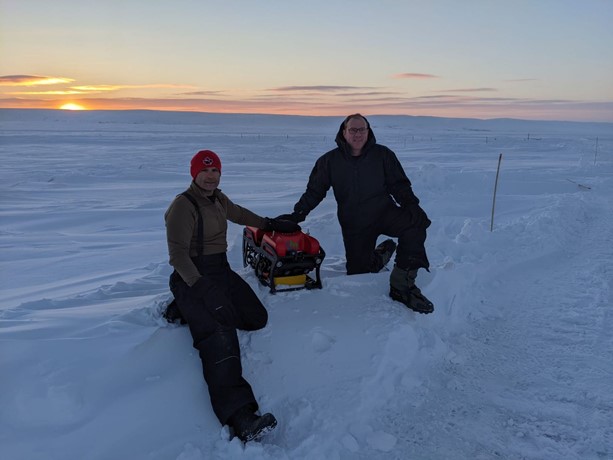
Elite police dive team in accident victim recovery, Bathurst Inlet, Nunavut, Canada
The SEAMOR Chinook ROV and Canada’s elite national police diver training team from the National Underwater Recovery Training Centre accomplish a historic feat north of the Arctic Circle – making the RCMP’s deepest successful recovery of an accident victim at a depth of 160m under the ice.
Situation
At Bathurst Inlet in Western Nunavut in January 2022, a worker died in an accident while working on the Back River gold mining project. It happened when his bulldozer, which was working on widening a 170km ice road from the port facility to the Goose project site, fell through the ice about 6km outside the port. The area is about 400km from Cambridge Bay. The bulldozer came to rest at a depth of 160m under the ice, a depth completely inaccessible to police dive teams and in extremely challenging Arctic conditions.
The closest police team to the site arrived with their underwater Remotely Operated Vehicle (ROV) and reached the target but were unable to open the door. Unfortunately, during their attempt the ROV became irretrievably caught up in 3/8th inch Polysteel line. That’s when they knew they had to call in the experts at the National Underwater Training and Recovery Centre (NURTC), Canada’s elite police diver training headquarters based in Nanaimo on Canada’s West Coast.
The team was established in the wake of a police diver fatality with the goal of implementing national police diver training standards to improve safety and enhance underwater detective techniques across the country. It is the foremost centre of its type in North America and one of only a handful of such institutes across the world.
Solution
Upon receiving the call, Sgt. G.E. (Jay) White and his team, Corporals Todd Kaufmann and Steve Wells began planning their mission to deploy their SEAMOR Chinook ROV, right down to the smallest possible detail. Practice, planning and preparation proved critical ahead of this challenging Arctic mission. Before departing for the Arctic, the team suspended the Chinook ROV in the air and rehearsed opening a bulldozer door of similar type. It was looking promising, and the mission was a go.
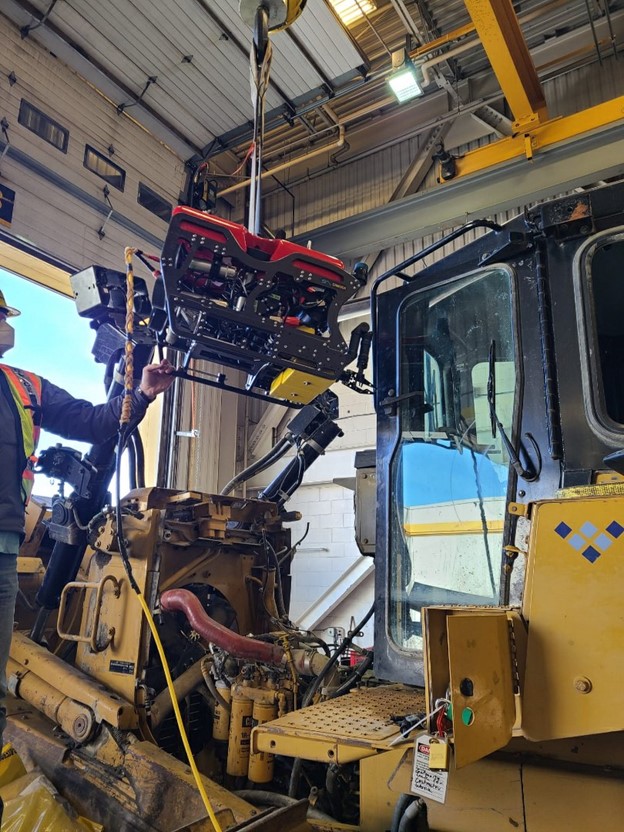
The Chinook, a world-class inspection ROV, was custom built by SEAMOR Marine for the NURTC with challenging missions in mind. “Fab” was the name the divers affectionately gave it. The Chinook is a 6-thruster vehicle, capable of diving to 600m and flying with a tether as long as 2km and farther if required for a custom job. The engineering philosophy of hyper modularity drives the team that has been building SEAMOR’s ROVs for 15 years.
For this Arctic mission, the team elected to integrate its 5-function Alpha Arm, the world’s leading electronic arm for observation class ROVs. The Alpha, from BluePrint Labs in Australia, is one of a wide range of 3rd party sensors which can be integrated with a Chinook system. The skid is pre-ballasted ready for attachment in the field with simple and effective dockside reconfigurability. Operating in a tent on the ice in the Arctic, it is critical that a complex system is easy and intuitive to configure and set up. That is where the famously rugged Chinook excels.
The mission’s first objective was to clear the underwater area and safely extract the trapped ROV from its predicament, removing an obstacle and potential hazard, which also gave the team a chance to acclimate to the environment. This was successfully accomplished on the first day of the mission with the help of a rope cutting jaw attachment to cut through the tough Polysteel line. Together with the SM Dual Function gripper, the RCMP’s Chinook ROV incorporates two manipulator arms in a compact, powerful, portable package.
The next day, “Fab” was able to locate the bulldozer again and navigate with extreme precision to the door using the integrated underwater GPS (USBL) and onboard multibeam sonar, live HD video cameras and specialized lighting.
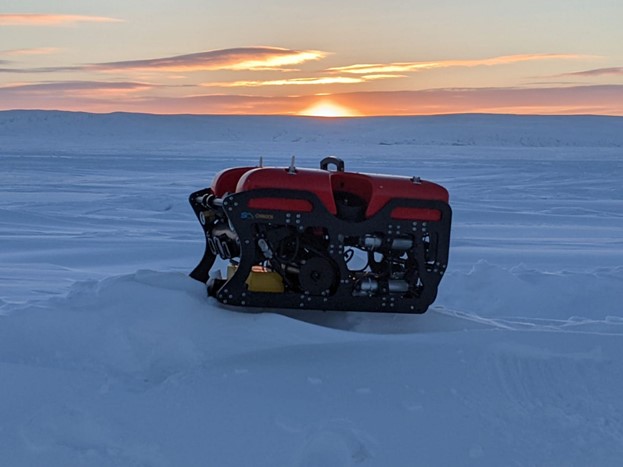
The next stage was by far the most critical of the mission. Could the ROV hold fast to the grab handle of the bulldozer while simultaneously using the second arm to manipulate the door handle down 90 degrees? This was the point where the other ROV had failed. Once the door was open, it would be possible to retrieve the victim’s body and bring it home to the waiting relatives to help bring closure.
The answer was a resounding yes. The mission was accomplished on the second day.
“Success!! ‘Fab’ accomplished all tasks required and worked like a champ above the Arctic Circle. The ROV worked perfectly the whole time,” said Jay White, coordinator at the NURTC (National Underwater Recovery Training Centre) and leader of RCMP national diver training program.
The team at the NURTC affectionately named their SEAMOR Chinook ROV ‘Fab’ after Fabrice Gevaudan, an RCMP diving colleague and friend who lost his life in the line of duty. Every day this dedicated team of professionals works to improve techniques and to extend the limits of what is possible with hard work and advanced tools.
The crew that named ‘Fab’ was the same crew that deployed ‘Fab’ to help complete this Nunavut recovery mission, the deepest recovery in RCMP history.
The RCMP’s elite national diver training team is proud to carry out challenging missions like this one, and we at SEAMOR are proud to assist. We sincerely hope the successful recovery of the victim brings comfort and closure to the family.
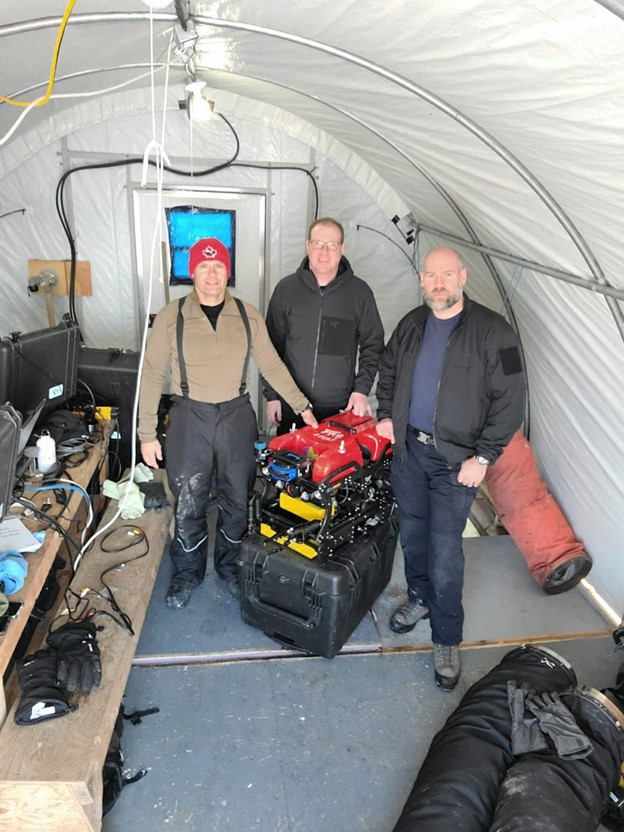
Photo Credit : Corporals Todd Kaufmann and Steve Wells
